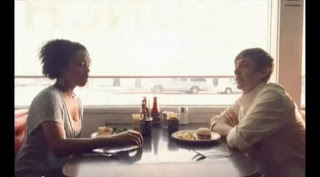(8:44-13:44)
 |
| The new Travis interrupting the cycle. |
These are the five most valuable minutes in Taxi Driver, in my opinion. This is the segment in which Travis Bickle contemplates his loneliness and the "long, continuous chain" that is his daily life. Suddenly, there is a change. His rumination leads him to consult a traveling arms dealer and begin to strengthen his body through exercise and abstinence. These are key to the overarching narrative of Travis's desire to rid New York City (and the world, by extension) of all of its dirt and filth. Indeed, they are two significant factors in his eventual attempt to do so.
 |
| Scorsese's partner-in-crime, so to speak. |
This part of the film relates to Martin Scorsese's work in a multitude of ways. Scorsese's work often incorporates elements of this scene such as guns and crime. Additionally, in several of his films, protagonists struggle throughout in order to change themselves, be it for better or for worse. Finally, for Taxi Driver, Scorsese employed an actor with whom he has worked many times since: Robert De Niro. With Taxi Driver as their second collaboration, the pair established a precedent as they have worked together six times since (eight times total).

 As stated, this segment is absolutely essential to the film's overall plot. Travis's ironic loneliness is explicitly stated for the first time; it has followed him his whole life. This, in conjunction with the repetitive monotony of his taxi-driving life lead to his evolution. He purchases the guns that will later save himself and Iris, and begins cleansing his body through a strict workout regimen and ceasing the use of "destroyers of [his] body."
As stated, this segment is absolutely essential to the film's overall plot. Travis's ironic loneliness is explicitly stated for the first time; it has followed him his whole life. This, in conjunction with the repetitive monotony of his taxi-driving life lead to his evolution. He purchases the guns that will later save himself and Iris, and begins cleansing his body through a strict workout regimen and ceasing the use of "destroyers of [his] body."




